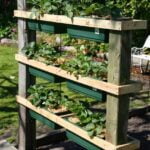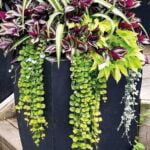A well-designed landscape can enhance the beauty and functionality of a flat lot, creating an inviting outdoor space for relaxation and entertainment. When considering flat lot landscape ideas, it’s important to choose plants, hardscaping elements, and outdoor features that complement the horizontal layout of the land. From maximizing curb appeal to creating functional outdoor living areas, there are numerous ways to transform a flat lot into a stunning landscape.
Choosing the right plants is essential for creating a visually appealing and thriving flat lot landscape. Whether it’s selecting low-maintenance foliage or incorporating colorful blooms, the plant selection can have a significant impact on the overall design. Additionally, creating functional spaces such as patios, decks, and outdoor living areas allows for seamless integration between indoor and outdoor spaces.
In addition to plants and functional spaces, hardscaping plays a crucial role in designing a successful flat lot landscape. Pathways, retaining walls, and terraces can add dimension and visual interest to the horizontal terrain. Water features like ponds and fountains can also bring life to a flat lot landscape while providing a soothing ambiance.
Furthermore, privacy and shade can be achieved through strategic placement of trees, shrubs, and screening options. These elements all come together to create an enticing environment that maximizes the potential of a flat lot landscape.
Choosing the Right Plants for a Flat Lot Landscape
When it comes to creating an appealing flat lot landscape, choosing the right plants is essential. The plants you select can greatly impact the overall look and feel of your outdoor space. One important consideration when choosing plants for a flat lot landscape is the climate and soil conditions in your area. It’s important to choose plants that are well-suited to thrive in your specific environment.
Another important factor to consider when selecting plants for a flat lot landscape is their size and shape. For a cohesive and visually pleasing design, it’s crucial to choose plants that complement each other in terms of height, spread, and form. Additionally, choosing a mix of evergreen and deciduous plants can ensure year-round interest and color in your landscape.
In addition to aesthetic considerations, it’s also important to think about the maintenance requirements of the plants you choose. If you’re looking for low-maintenance options, consider native or drought-tolerant plants that require minimal watering and upkeep. By carefully selecting the right plants for your flat lot landscape, you can create a beautiful and sustainable outdoor space that enhances the overall appeal of your property.
| Plants Considerations | Importance |
|---|---|
| Climate and Soil Conditions | Choose plants suited for environment |
| Size and Shape | Select complementary height, spread, form |
| Maintenance Requirements | Select low-maintenance options for easier upkeep |
Creating Functional Spaces
When it comes to designing a flat lot landscape, creating functional spaces such as a patio, deck, and outdoor living areas is essential for enhancing the usability and visual appeal of the outdoor space. Whether you’re looking to entertain guests, relax with your family, or simply enjoy the beauty of nature, thoughtful design and layout can make all the difference.
1. Patio Design
A well-designed patio can serve as the focal point of your outdoor living space. When planning your patio design, consider factors such as size, shape, and materials. For a cohesive look, choose materials that complement the exterior of your home. Options include concrete pavers, natural stone, brick, or wood decking. Incorporating comfortable seating, dining areas, and even a fire pit can transform your patio into a versatile and inviting space.
2. Deck Construction
A deck provides another opportunity to expand your outdoor living area. Depending on your preferences and budget, you can opt for wood or composite decking materials. The layout of your deck should take into account factors such as sun exposure, access to the house, and any desirable views. Consider adding built-in seating or features such as built-in planters to maximize functionality while enhancing the overall aesthetic.
3. Outdoor Living Areas
In addition to a patio and deck, consider creating designated outdoor living areas within your landscape. This could include cozy nooks with seating for intimate gatherings, an outdoor kitchen for al fresco dining experiences, or even a designated play area for children. By carefully zoning different areas within your landscape design plan ensures that there is something for everyone to enjoy in the great outdoors.
Incorporating these functional spaces into your flat lot landscape design not only enhances usability but also adds value to your property by expanding usable square footage beyond the walls of your home.
Utilizing Hardscaping
When designing a flat lot landscape, hardscaping plays a crucial role in not only adding visual interest but also creating functional and practical outdoor spaces. Paths, retaining walls, and terraces are essential hardscape elements that can be incorporated to enhance the overall design of a flat lot landscape.
Paths
Paths are an essential feature in any flat lot landscape as they provide both aesthetic appeal and practical function. When choosing materials for paths, consider options such as natural stone, pavers, or gravel for a durable and visually appealing surface. Curved paths can add visual interest and guide visitors through different areas of the landscape, while straight paths create a sense of structure and organization.
Retaining Walls
Incorporating retaining walls into a flat lot landscape can help create different levels and define specific areas within the outdoor space. Retaining walls are not only functional for holding back soil on sloped landscapes but can also be used to create terraced gardens or seating areas on flat lots. When designing retaining walls, consider materials that complement the overall style of the landscape, such as stacked stone or concrete blocks.
Terraces
Terraces are an effective way to add dimension and visual interest to a flat lot landscape. They allow for the creation of distinct levels or platforms within the outdoor space, which can be utilized for various purposes such as dining areas, seating nooks, or garden beds. Consider incorporating terraces with different materials like wood decking, stone pavers, or concrete to add texture and versatility to the landscape design.
Incorporating these hardscaping elements into the design of a flat lot landscape can transform the outdoor space into a visually stunning and functional environment. By carefully selecting materials and thoughtful placement of paths, retaining walls, and terraces, homeowners can create an outdoor oasis that enhances their property’s value and curb appeal. These hardscaping features also provide opportunities for creative expression and personalization within the landscape design process.
Incorporating Water Features
When it comes to designing a stunning flat lot landscape, incorporating water features can add an element of tranquility and beauty to the outdoor space. Whether you have a small or large flat lot, there are various water feature options to consider that can enhance the overall aesthetic of your landscape.
Here are some water feature ideas to consider for your flat lot landscape:
- Ponds: A pond can be a focal point in your flat lot landscape, providing a habitat for aquatic plants and wildlife. Whether you opt for a naturalistic pond with rocks and plants or a formal koi pond, it can add visual interest and create a sense of calm.
- Fountains: Adding a fountain to your flat lot landscape can provide the soothing sound of flowing water while also serving as an eye-catching feature. There are various types of fountains to choose from, including tiered, spouting, and wall fountains, each offering its own unique appeal.
- Waterfalls: If you have elevation changes on your flat lot, incorporating a waterfall into the landscape design can create a dramatic focal point. Whether it’s a cascading waterfall into a pond or a standalone feature, the sight and sound of running water can elevate your outdoor space.
In addition to enhancing the visual appeal of your flat lot landscape, these water features can also attract birds and other wildlife, creating a dynamic and lively outdoor environment. Consider incorporating one or more of these water features into your landscape design to transform your flat lot into an oasis of serenity.
Designing for Privacy and Shade
When it comes to designing a beautiful and functional landscape for a flat lot, creating privacy and shade is an essential aspect to consider. Choosing the right trees and shrubs can enhance the overall aesthetic of the outdoor space while also providing much-needed shade during hot summer months. Additionally, incorporating screening options such as fences or trellises can help create secluded areas within the landscape.
One of the key considerations when selecting trees and shrubs for a flat lot landscape is to choose varieties that are well-suited for the specific climate and soil conditions of the area. Native plants often thrive in these conditions, requiring less maintenance and water once established. Some popular choices for shade-providing trees include maple, oak, and birch, while evergreen shrubs like boxwood or holly can be used to create natural barriers.
In addition to trees and shrubs, incorporating strategic screening options can further enhance the privacy of a flat lot landscape. Fences or trellises covered with climbing plants can create intimate areas within the yard. To ensure design cohesiveness, it’s important to select materials that complement the overall look of the landscape. By carefully considering these elements, homeowners can achieve both visual appeal and functionality in their flat lot landscaping.
| Plants | Privacy Features |
|---|---|
| Maple Trees | Fencing |
| Holly Shrubs | Trellises with Climbing Plants |
| Boxwood Shrubs | Natural Barriers |
Low-Maintenance Landscaping Ideas for Flat Lots
Having a low-maintenance landscape for your flat lot can save you time and effort in the long run. Here are some ideas to achieve a beautiful yet easy-to-care-for outdoor space:
- Choose native plants: Opt for plants that are well-suited to your local climate and soil conditions. Native plants often require less water and maintenance compared to non-native species.
- Install artificial turf or ground cover: If you want a green lawn without the hassle of mowing, consider using artificial turf or ground cover plants such as creeping thyme or clover.
- Use mulch to reduce weeds: Mulch not only helps retain moisture in the soil but also suppresses weed growth, cutting down on the need for frequent weeding.
In addition to plant choices, there are other ways to minimize maintenance in your flat lot landscaping:
- Incorporate hardscaping elements such as gravel paths or stone patios to reduce the amount of grass or plants that need regular care.
- Opt for low-maintenance materials for features like retaining walls and terraces, such as concrete blocks or composite decking.
- Consider drip irrigation systems or automatic sprinklers to efficiently water your landscape without constant manual effort.
By implementing these low-maintenance landscaping ideas, you can enjoy a beautiful outdoor space without the added stress of excessive upkeep.
Maximizing Curb Appeal
When it comes to maximizing curb appeal for a flat lot landscape, paying attention to the design and layout of driveways, walkways, and entryways is crucial. These elements not only provide functional access to the home but also serve as important aesthetic features that enhance the overall look of the property.
For driveways, consider using materials that complement the style of your home and landscaping. Whether it’s a traditional concrete driveway, a gravel driveway for a more rustic look, or paver stones for an elegant touch, the choice of material can make a significant impact on the visual appeal. Additionally, incorporating landscaping along the edges of the driveway can soften its appearance and create a seamless transition between the hardscape and softscape elements.
When it comes to walkways, think about how they will connect different areas of your flat lot landscape. Curved pathways can add visual interest and lead visitors through various garden spaces, while straight paths can create a clean and organized look. Using natural stone pavers, brick, or gravel for walkways can add texture and charm to the landscape. Incorporating lighting along walkways not only adds safety and functionality but also enhances the overall ambiance of your outdoor space.
Finally, entryways should be inviting and visually appealing. Consider framing your front door with lush landscaping or adding architectural elements such as an arbor or pergola to create a sense of arrival.
Adding decorative touches like planters, outdoor art pieces, or a welcoming doormat can also contribute to creating an attractive entryway that sets the tone for the entire landscape. By carefully considering these details when designing driveways, walkways, and entryways, you can significantly enhance the curb appeal of your flat lot landscape while creating practical access points that seamlessly blend with your overall design vision.
Conclusion
In conclusion, designing a stunning landscape for a flat lot requires careful consideration of plant selection, functional spaces, hardscaping, water features, privacy and shade elements, low-maintenance options, and maximizing curb appeal. By paying attention to each of these aspects, homeowners can create a visually appealing and enjoyable outdoor space that complements the flat terrain.
When it comes to choosing the right plants for a flat lot landscape, it is essential to consider factors such as sunlight exposure, soil type, and climate. Selecting a variety of plants with different colors, textures, and heights can add visual interest and depth to the landscape. Additionally, incorporating native plants and drought-resistant species can help reduce water consumption and maintenance efforts.
Functional spaces such as patios, decks, and outdoor living areas are essential for enjoying the outdoor environment of a flat lot. These areas provide opportunities for relaxation, entertainment, and dining al fresco. By integrating hardscaping elements like paths, retaining walls, and terraces into the landscape design, homeowners can create defined spaces while also adding structural interest to the outdoor area.
Water features such as ponds, fountains, or waterfalls can further enhance the ambiance of a flat lot landscape by adding soothing sounds and visual appeal. Finally, selecting low-maintenance landscaping options and maximizing curb appeal through well-designed driveways, walkways, and entryways can ensure that the flat lot landscape remains beautiful and functional for years to come.
Frequently Asked Questions
How Do You Landscape a Flat Lot?
Landscaping a flat lot can be achieved by adding layers and dimension to create visual interest. This can be done through the use of various plants, trees, shrubs, and other greenery to add texture and color. Additionally, incorporating hardscape elements such as pathways, retaining walls, and decorative rocks can also enhance the overall look of the landscape.
How Can I Make My Flat Yard More Interesting?
To make a flat yard more interesting, consider adding different levels or raised garden beds to create depth. Incorporating diverse landscaping materials such as gravel, mulch, and decorative stones can also add visual appeal. Furthermore, adding a focal point like a water feature or outdoor seating area can make the space more inviting and captivating.
What Is the Cheapest Landscape Fill?
The cheapest landscape fill option is often topsoil or compost which are readily available in bulk quantities at affordable prices. These materials can be used to level out the ground surface, amend soil quality for planting, and even create raised beds for gardening.
When working within a budget, it’s important to explore local options for obtaining landscape fill such as mulch from tree trimmers or recycled materials from construction sites.

Welcome to my gardening blog! I am passionate about plants and enjoy sharing my knowledge and experiences with others. In this blog, I will write about everything related to gardening, from tips on how to get started to updates on my own garden projects.





